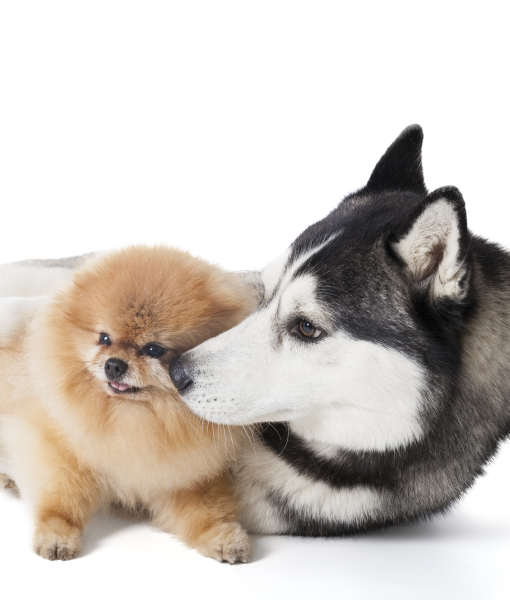
You may have heard of a "spitz" dog before, but what does "spitz" mean? It's not a breed, and it's not a group the way organizations like the American Kennel Club or Westminster Kennel Club recognize groups. "Spitz" is a dog type describing several breeds that share loosely common ancestry and traits. Physically, spitz dogs typically have thick and dense fur, pointed ears and muzzles, and puffy tails that curl up and over their rears. They descend from ancient breeds that came from Arctic regions, although today's spitz dogs were developed all over the world. Read on to learn the histories behind 10 of the most popular spitz dog breeds.
Akita
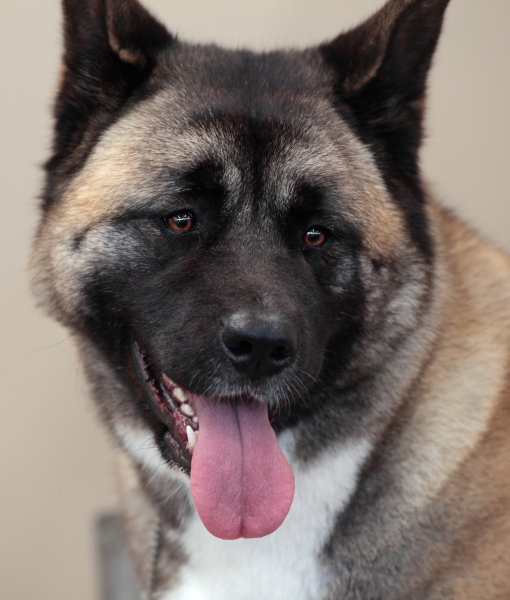
Considered a "natural treasure" of Japan, its native country, the Akita was originally bred as an adaptable hunting dog in the mountainous region of Northern Japan. It was saved from extinction in the 1800s, during which the Japanese made a concerted effort to save seven native dog breeds. The Akita is the largest among those seven breeds.
Hachiko, arguably the most honored Akita, would wait for his master every day at the station to accompany him back home. Even after his master's death, he continued to religiously wait for him at the station every day for nine years. After Hachiko died on March 8, 1935, a statue was built to commemorate his dedication; it is here that Hachiko's ceremony is held annually.
Hellen Keller, renowned American author and political activist, is credited with bringing the first Akita to the United States in 1937. It later became recognized by the American Kennel Club in 1972, and is today considered an excellent breed with good-natured and courageous attributes—a fact that lends itself to the breed's most common profession in Japan: guard dog and police dog.
Alaskan Malamute
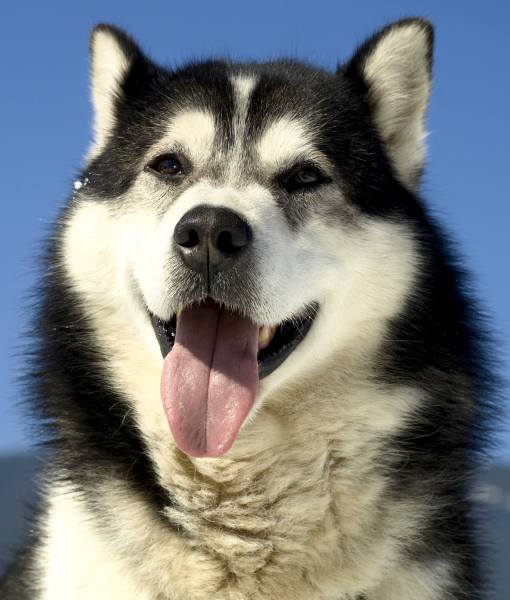
Although the origin of the Alaskan Malamute is not clearly known, it is generally considered to be a descendant of the Mahlemut dog. An ancient Inuit tribe, the Mahlemut were the native people of Norton Sound, an inlet on the northwest coast of Alaska. Mahlemut is derived from the word Mahle, which is the name of an Inuit tribe, and mut, which means village. Just like many dogs belonging to the spitz family, this breed developed in the Arctic region and was shaped by difficult climatic conditions.
Originally, the dogs functioned as partners when hunting for polar bears, seals, and other big game. Because the Alaskan Malamute was strong, large and fast, it could easily perform the task that would require many small dogs, such as carrying the large carcases back to the master's home. The Malamute became so intertwined with people's lives, that it soon was regarded as a member of the family, no longer treated as a mere pet. In the 1700s, foreign explorers of Alaska — many who came during the gold rush of the late 19th century — were genuinely impressed with the large dogs and the owners' affection for them. They entertained themselves by staging races and weight-pulling contests among the dogs. The native Alaskan Malamutes were eventually crossbred with each other and with the dogs brought by settlers, in order to create good racers or to provide the large number of dogs required for gold searching activities. This posed a threat to the purity of Malamute breed.
A dog-racing enthusiast in New England, however, obtained viable specimens of the breed in the 1920s, and began to develop the native Malamute. As the breed garnered fame, it was used in various means. In 1933, for example, some Malamutes were selected to aid Adm. Richard Byrd with his Antarctic expedition. The Malamute was again used in the Second World War, to act as a pack animal, freight hauler, and search-and-rescue dog. The American Kennel Club recognized the breed in 1935 and since then it has become popular as a faithful pet and impressive show dog.
American Eskimo
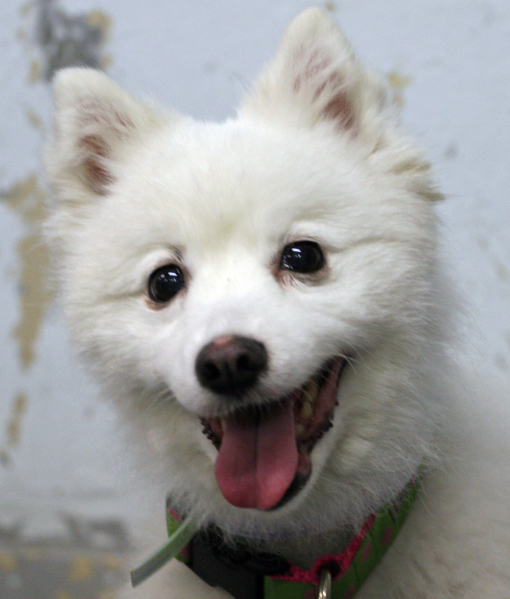
The American Eskimo Dog (or Eskie) is almost certainly descended from various European Spitzes, including the white German Spitz, the white Keeshond, the white Pomeranian, and the Volpino Italiano (or white Italian Spitz).
Originally referred to as the American Spitz, the breed was first used as a circus performer, traveling throughout the United States and entertaining the audience with tricks. The American Spitz was especially apt at this line of work because of its sparkling white coat, quickness, agility, innate intelligence, and its proficiency at training. As the news of the traveling dog with its bag of tricks grew, its popularity did also. Often,
spectators would buy young American Spitz pups from the circus.
In 1917, the "American Spitz" formerly became known as the "American Eskimo Dog." Although the reasoning for this is uncertain, it is probably to pay homage to the native Eskimo people who developed the large, Nordic dogs associated with the Eskie.
The American Eskimo Dog Club of America was formed in 1985. And after transferring their registered dogs to the American Kennel Club (AKC) in 1993, the AKC recognized the American Eskimo Dog in 1995 and placed the breed in the Non-Sporting Group.
Canaan
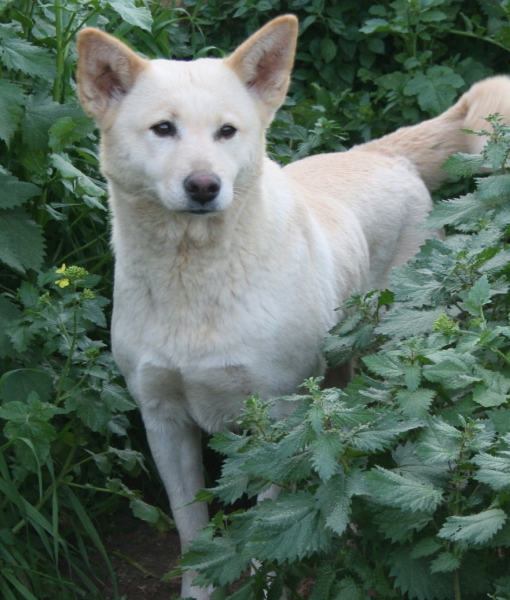
There is evidence to suggest the breed developed centuries ago in Canaan, the land of the Israelites. At the time, there were referred to as the Dog of Canaan or Kelev Kanani. However, many of these Israeli dogs would become isolated in the Negec Desert and Sebulon Coastal Plain when the Romans drove the Israelites from their land about 2,000 years ago. On the brink of extinction, some wild Canaan Dogs were captured by local Bedoins to assist them in guarding and herding.
Dr. Rudolphina Menzel, who was asked by the Haganah (a Jewish self-defense organization) to develop a dog capable of guarding the isolated Jewish settlements and withstanding the harsh climate, was instrumental in developing the modern Canaan Dog breed.
Her breeding and training program consisted of only the best native, untamed dogs, which were then developed to serve as as messengers, sentry dogs, Red Cross helpers, mine detectors, helpers in locating wounded soldiers during World War II, and as guide dogs for visually handicapped people after the War. This is perhaps the only breed to rise from its feral roots and become such a dedicated and useful companion in such a short time span.
The first Canaan Dog entered the United States in 1965. But given that its appearance was understated, the breed did not quickly garner admiration. The American Kennel Club registered the breed under the Herding Group in 1997, and today it is considered a popular show dog and an excellent, well-behaved house pet.
Chow Chow
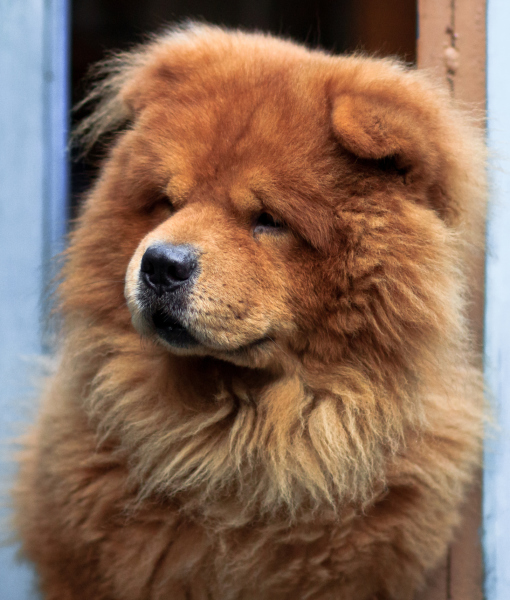
The chow chow breed is thought to be 2,000 years old—perhaps even older. It was common in China for many centuries and may have served as a hunting, pointing or birding dog for nobles.
The breed's numbers and quality declined soon after the imperial hunts stopped, but some pure descendants of the early chow were kept by the aristocracy and in monasteries. Some have also theorized that the breed provided food and fur pelts in Mongolia and Manchuria. Its black tongue is among the chow's most unique characteristics, and many Chinese nicknames for the dog are based on this feature.
When the breed was finally introduced to England in the late 18th century, it was given the Chinese name chow chow. The name, which comes from a word meaning assorted curios and knick-knacks from the Oriental Empire, was applied to the breed because the dogs were written into the ship's cargo load as curios when brought to England.
The breed gained much fame again when Queen Victoria took a fancy to the chow. And by 1903, it had entered the United States and was granted breed status by the American Kennel Club. The noble appearance of the breed attracted dog fanciers, but it was not until the 1980s that its popularity soared in America.
Keeshond
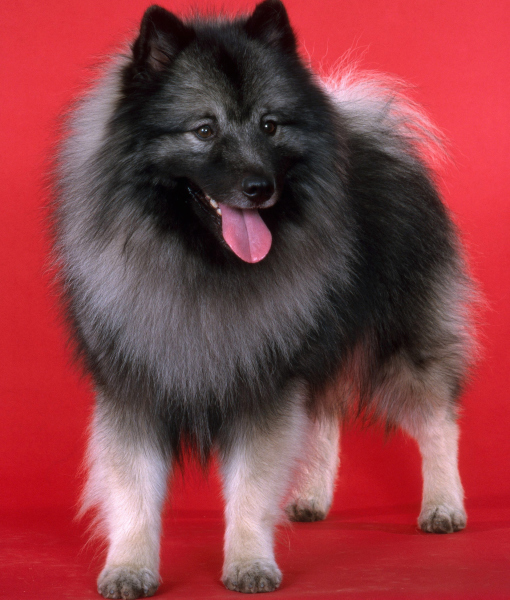
The exact origin of the Keeshond has not been recorded. However, in the 18th Century, the dog functioned as a watchdog and companion in Holland. Later, the breed was called the barge dog, as it was frequently kept on small boats on the Rhine River to function as a watchdog. Fatefully, the Keeshond became involved in a political uprising in Holland, prior to the French Revolution. Cornelis (Kees) de Gyselaer, the leader of the Dutch rebellion, owned a barge dog that came to be known as Kees. The dog would be seen in so many political caricatures at the time, that it became an icon of the Dutch patriot.
Sadly for this breed, the Patriots did not succeed, causing numerous Keeshond owners to discard their dogs for fear that they would be identified as losers. Even worse for the breed, as barges on the Rhine became larger, the need for the Keeshond diminished. With the efforts of some farmers and river boatmen, the breed survived but with a poor profile.
Baroness van Hardenbroek initiated an effort to save the breed in 1920 and, within five years, she managed to win several English promoters for the Keeshond. In 1930, the American Kennel Club recognized the breed; today it is Holland's national dog.
Pomeranian
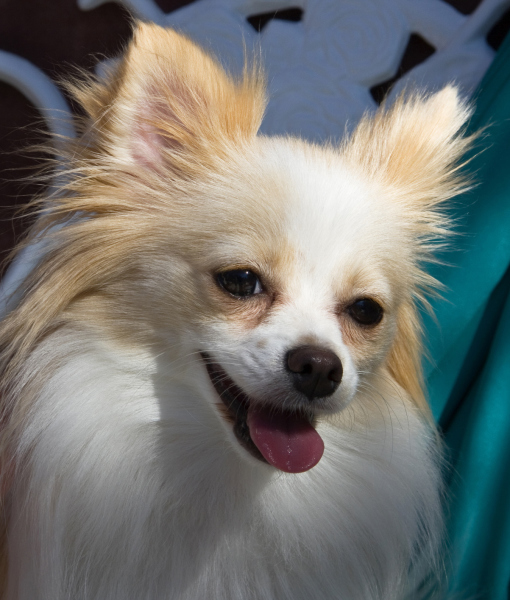
The Pomeranian is the smallest dog in the Spitz family. The breed gets its name from the now defunct region of Pomerania (present day Germany and Poland) not because it originated there, but because the breed was most likely developed and bred down to size there.
It was only after the dogs were introduced in England in the mid-19th century that they came to be known as Pomeranians, but these dogs were not as we know them today. Probably weighing in at about 30 pounds and white in color, the most probable ancestor of the breed was the Deutscher Spitz. In its larger form, the Pomeranian served as a sheepherder.
The English Kennel Club recognized the Pomeranian in 1870. However, the breed only grew in popularity when Queen Victoria imported a Pomeranian from Italy. And while her dogs were large and gray, most others were small and sported a variety of colorful strains.
The Pomeranian was placed in dog shows in the United States under the American Kennel Club's Miscellaneous Class as far back as 1892, but it was not until 1900 that it received a regular classification. By then, the breed was exhibited in various colors in both the U.S. and England. The trend of breeding the Pomeranian smaller continued and even more emphasis was placed on its coat and "puff-ball" look. Today, this miniaturize sled dog continues to attract dog fanciers, as well as loving families.
Samoyed
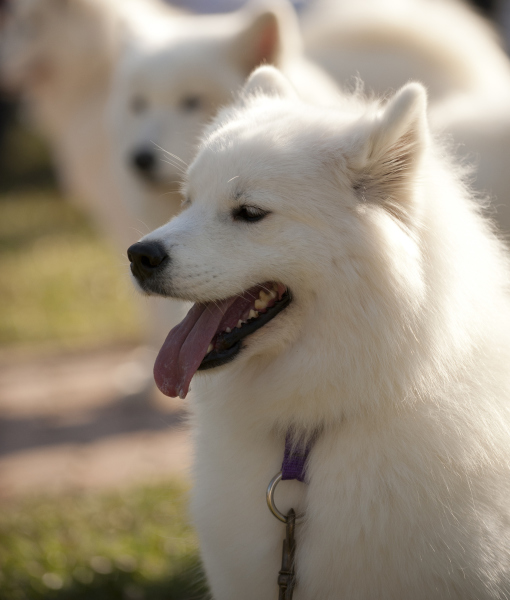
The Samoyed breed is named after the nomadic Samoyed group of people, who came from central Asia to northwestern Siberia. They were solely dependent on reindeer for their food, thus they had to move constantly with the herd, to ensure the reindeer had enough food for themselves. They used hardy and powerful spitz dogs for herding and protecting the reindeer from ferocious Arctic predators. These dogs were treated like family members, lived in the nomads' tents and kept the kids warm in bed. Sometimes they were helpful in hauling sledges and boats and hunting bears.
During the late 1800s, the Samoyed dog breed began to arrive in England. However, not all of the early imports were the unmixed white breed which is common today. One of these early imports was gifted to Queen Alexandra, who worked hard to promote the Samoyed. Interestingly, there are many modern pedigrees that can be traced back from this dog.
The first Samoyed was brought to the United States in 1906, a gift from Grand Duke Nicholas of Russia. At the time, the breed became well known for its ability to outperform other sledge dogs, and in the early 20th century, Samoyed dogs would become members of various sledge teams on expedition to the South Pole and Antarctica.
Since World War II, American dog fanciers have made the Samoyed quite popular, attracted to the breed for its glossy, refined appearance and brave feats. The Samoyed people may have settled down long ago, but the Samoyed dog breed continues to be spread out throughout the world.
Shiba Inu
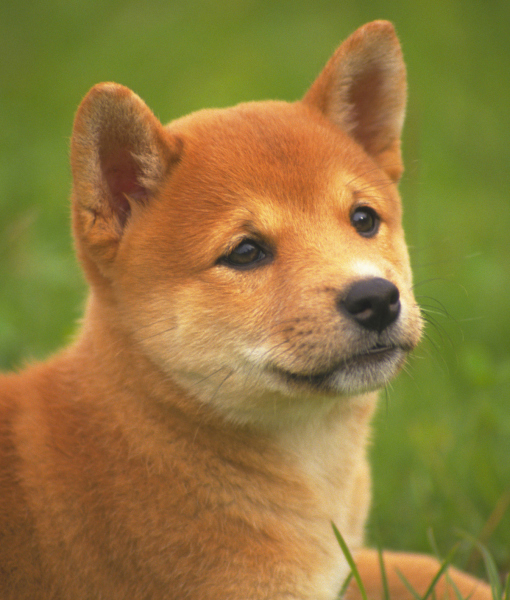
The ancient shiba inu is the smallest of the six Native Japanese breeds. Although its origin is obscure, the shiba inu is surely of spitz heritage, most probably used as a hunting dog in central Japan around 300 B.C. Many believe it hunted small game such as birds, but it may have also used occasionally to hunt wild boar.
According to some, the word "shiba" may mean small, but it also may mean brushwood, a reference to similarity to the red brushwood trees and the dog's red coat. This is also the reason the shiba is sometimes nicknamed "small brushwood dog."
The the three primary types of the breed were the Shinshu shiba, the Sanin shiba, and the Mino shiba, all of which were named after their place of origin: Nagano Prefecture, the northeast mainland, and Gifu Prefecture, respectively.
The destruction caused by World War II nearly lead to the extinction of the breed; its numbers were later decimated by distemper in the 1950s. To save the breed, various strains were interbred, including the heavier-boned dogs of the mountainous areas and the lighter-boned dogs from the lowlands. An unforeseen result was the shiba's newfound variation in bone structure and substance.
The first shiba dogs entered the United States in the 1950s, but the breed only gained recognition by the American Kennel Club in 1993. Since then the popularity for this hardy and headstrong has flourished.
Siberian Husky
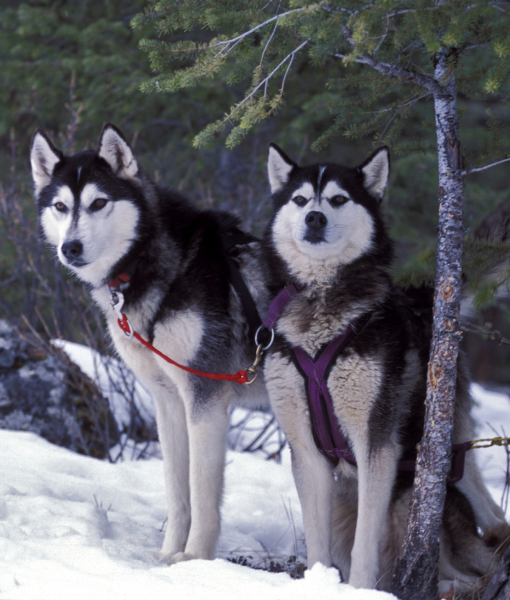
The Chukchis, a semi-nomadic people of northeastern Asia, are responsible for developing the Siberian husky. And though the breed's lineage remains a mystery, the husky is probably of spitz stock, taking several centuries for the Chukchis to train them as sledge dogs. Famously used during the Alaskan gold rush, the Siberian husky was an essential laborer in the Arctic regions, later emerging as the primary breed used in dog racing, a popular form of entertainment in these regions.
One such racing event, the 400-mile All Alaska Sweepstakes Race from Nome to Candle, traversed some of Alaska's most arduous areas. During the second annual All Alaska's Sweepstakes Race in 1909, the first team of Siberian Chukchi huskies were entered. Because of their docile nature and small size, the dogs were hardly acknowledged as worthy competitors.
However, a young Scotsman named Charles Fox Maule Ramsay took notice of the breed and had his team's lead rider, John "Iron Man" Johnson, use them to pull his sled in the 1910 All Alaska Sweepstakes race, defeating his competitors handily (Johnson and his huskies still hold the race's fastest finish time, 74:14:37). Ramsay's other teams, which were also led by Siberian huskies, assumed the second and fourth positions in the race, further evidence of the breed's dominance in the sport. For the next decade, the Siberian husky was used to capture some of the most prestigious racing titles in Alaska, especially where the rugged terrain was suited to the breed's endurance capability.
The Siberian Husky's popularity soon spread into Canada and in 1930, the American Kennel Club officially recognized the breed. Several Siberian huskies would later serve in the U.S. Army's Arctic Search and Rescue Unit during World War II. The breed continues to astonish racing fanciers with its speed and endurance, but has also become quite a popular show dog and family pet.



